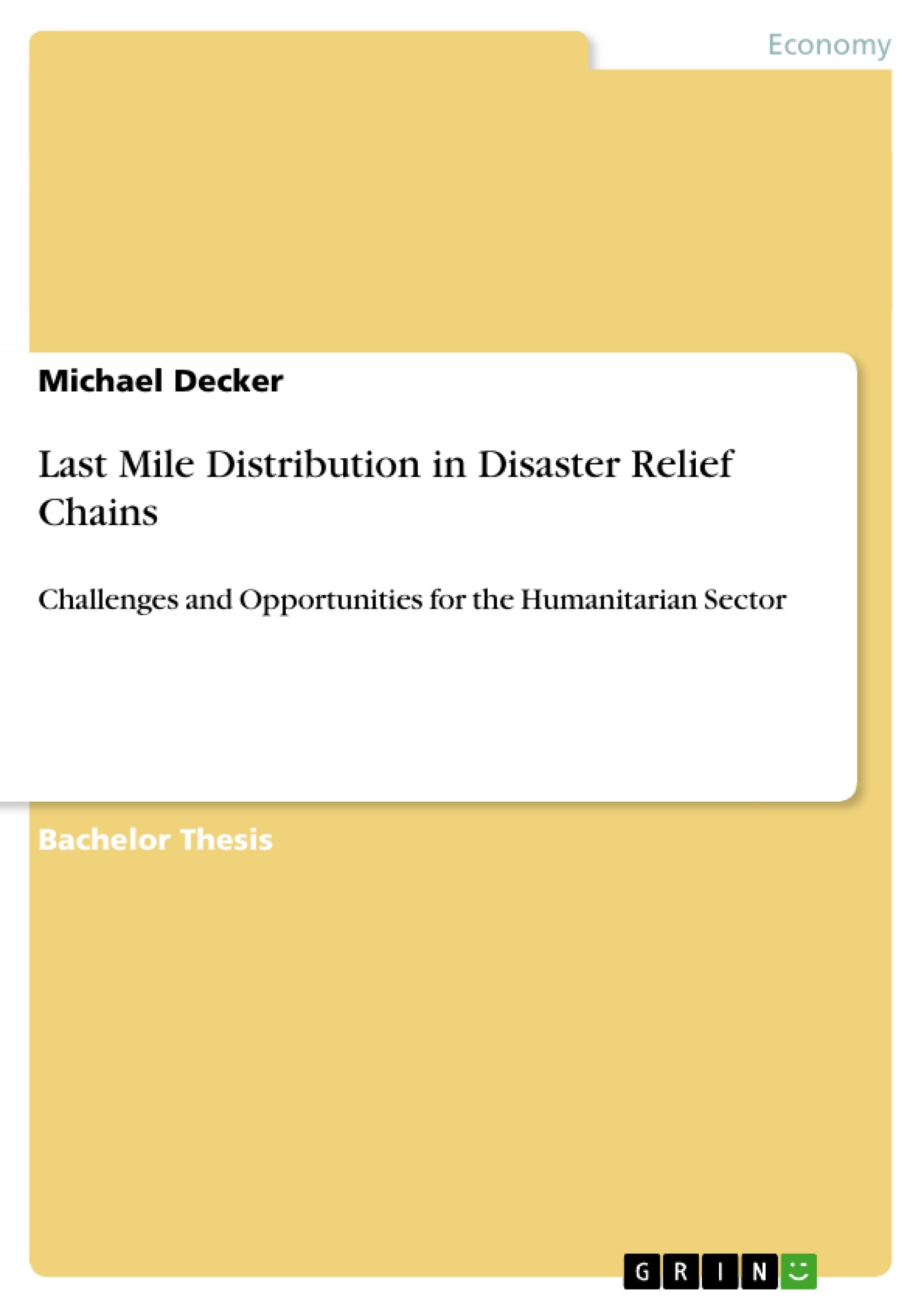Due to the latest catastrophes caused by both man and nature, humanitarian logistics has received increasing interest from academics, practitioners and specialists. These interests are increased as well by an expanding market of disaster relief and by the fact that disaster relief supply chains are complex and dynamic, not to mention that they have a lot of uncertainties that make operations very complicated. Especially in disaster relief, the supply chains have to be fast, agile and flexible in order to rapidly provide the appropriate amount, and type of emergency supplies, to minimize human suffering or death.
The last mile distribution is the final stage of the disaster relief supply chain, i.e. the delivery of relief supplies from local distribution centres to beneficiaries affected by disasters. The main problems for the last mile are:
• Supplies have to be carried out rapidly in an environment with destabilized infrastructures
• Limitations related to transportation resources and emergency supplies
• Lack of coordination among relief actors
• Insufficient information about demand and need for help
To solve these problems, the private sector approaches of the last mile can be conducted and innovative technologies can be implemented. The aim of this paper is to give an overview of supply chains in disaster relief, identify the main problems of the last mile distribution in disaster relief operations, describe optimization possibilities of the private sector, and examine the applicability for disaster situations.
Inhaltsverzeichnis (Table of Contents)
- 1 Introduction
- 2 Disaster Relief Supply Chains
- 2.1 Characteristics
- 2.2 Challenges and Problems
- 2.2.1 Lack of Recognition of the Importance of Logistics
- 2.2.2 Lack of Professional Staff
- 2.2.3 Inadequate Use of Technology
- 2.2.4 Lack of Institutional Learning
- 2.2.5 Limited Collaboration
- 2.2.6 Additional Challenges
- 2.3 Institutions that face the Challenges
- 2.3.1 Fritz Institute
- 2.3.2 Humanitarian Supply Management System
- 2.3.3 United Nations Humanitarian Response Depot
- 3 The Last Mile as a Part of the Disaster Relief Supply Chain
- 3.1 Characteristics
- 3.2 Problems and Challenges
- 4 Optimization of Last Mile Distribution in Disaster Areas through Business Approaches
- 4.1 Use of Intelligent Transportation Systems
- 4.2 Supplier - Buyer Alliances
- 4.3 Third Party Logistics Providers
- 5 Conclusion and Perspectives
Zielsetzung und Themenschwerpunkte (Objectives and Key Themes)
This bachelor thesis focuses on the challenges and opportunities associated with last mile distribution in disaster relief supply chains. It aims to provide a comprehensive analysis of the complexities involved in delivering aid effectively in the final stages of the humanitarian response.- Challenges of Last Mile Distribution in Disaster Relief
- Optimization Strategies for Last Mile Distribution
- Role of Technology in Disaster Relief Logistics
- Importance of Collaboration and Partnerships
- Impact of Institutional Learning on Disaster Relief Efforts
Zusammenfassung der Kapitel (Chapter Summaries)
Chapter 1 provides an introduction to the topic of last mile distribution in disaster relief supply chains, setting the stage for the research and analysis that follows. Chapter 2 delves into the characteristics and challenges of disaster relief supply chains, exploring factors such as the lack of professional staff, inadequate use of technology, and limited collaboration. Chapter 3 focuses on the specific challenges and characteristics of last mile distribution in disaster areas, highlighting the unique complexities of this critical phase of the relief effort. Chapter 4 explores various business approaches for optimizing last mile distribution in disaster areas, examining the use of intelligent transportation systems, supplier-buyer alliances, and third party logistics providers.
Schlüsselwörter (Keywords)
This bachelor thesis explores the key concepts of last mile distribution, disaster relief supply chains, logistics, humanitarian aid, technology, collaboration, and institutional learning. The research focuses on practical challenges and opportunities, examining strategies for effective and efficient delivery of aid in the final stages of the humanitarian response.- Quote paper
- Michael Decker (Author), 2012, Last Mile Distribution in Disaster Relief Chains, Munich, GRIN Verlag, https://www.grin.com/document/230846



